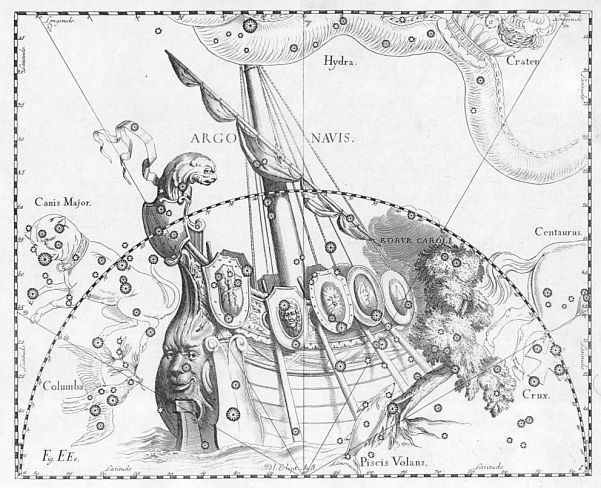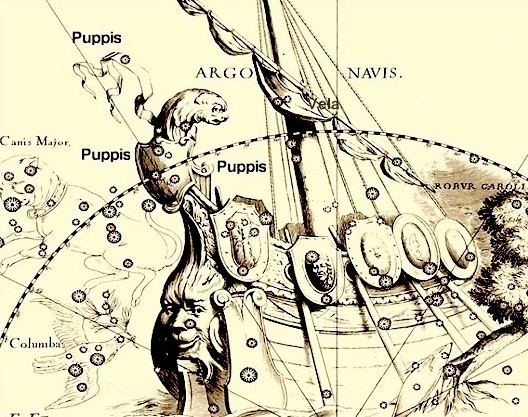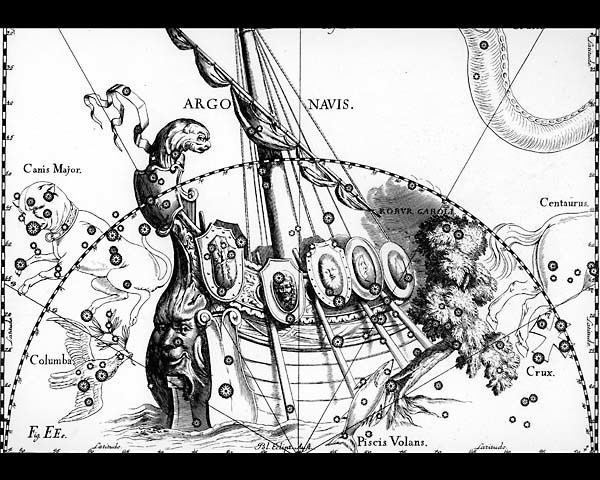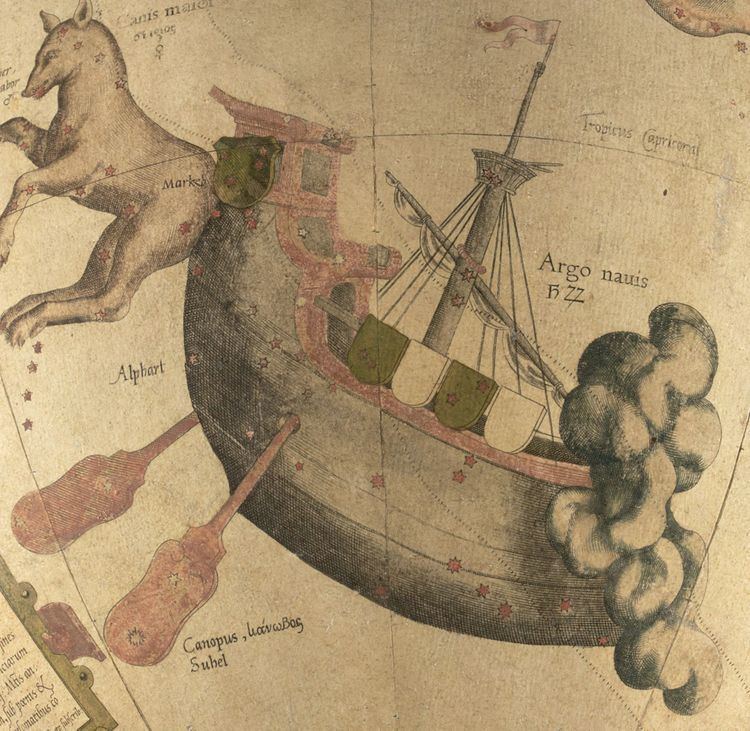 | ||
Similar | ||
Argo navis meaning
Argo Navis (the Ship Argo), or simply Argo, was a large constellation in the Earth's southern sky that has since been divided into three constellations (Carina, Puppis and Vela). It was identified with the Argo, the ship used by Jason and the Argonauts in Greek mythology. The genitive was "Argus Navis", abbreviated "Arg". Flamsteed and other early modern astronomers called the constellation just Navis (the Ship), genitive "Navis", abbreviated "Nav".
Contents

Due to precession, the stars of Argo have been shifted farther south since Classical times, and far fewer of its stars are visible today from the latitude of the Mediterranean.
The original constellation was found low near the southern horizon of the Mediterranean sky. The ship became visible in springtime and sailed westward, skimming along the southern horizon. The ancient Greeks identified it with the ship sailed by Jason and the Argonauts to Colchis in search of the Golden Fleece.

Argo Navis is the only one of the 48 constellations listed by the 2nd century astronomer Ptolemy that is no longer officially recognized as a constellation. It was unwieldy due to its enormous size. In his Coelum Australe Stelliferum, published in 1763, the French astronomer Nicolas Louis de Lacaille explained that there were more than a hundred and sixty stars clearly visible to the naked eye in Navis, and so he used the set of lowercase and uppercase latin letters three times on portions of the constellation referred to as "Argûs in carina" (Carina, the keel or hull), "Argûs in puppi" (Puppis, the poop deck or stern), and "Argûs in velis" (Vela, the sails). Lacaille replaced Bayer's designations with new ones that followed the stars' magnitudes more closely, but used only a single Greek-letter sequence and described the constellation for those stars as "Argûs". Similarly, faint non-lettered stars were listed only as in "Argûs".

The final breakup and abolition of Argo Navis was proposed by Sir John Herschel in 1841 and again in 1844, but it was not formalised until 1930 when the IAU defined the 88 modern constellations. Lacaille's designations were kept in the three separate constellations, so Carina has α, β and ε, Vela has γ and δ, Puppis has ζ, and so on.

The constellation Pyxis (the mariner's compass) occupies an area which in antiquity was considered part of Argo's mast. Some authors state that Pyxis was part of the Greek conception of Argo Navis, but magnetic compasses were unknown in ancient Greek times. Lacaille considered it a separate constellation, representing one of the modern scientific instruments he placed among the constellations (like Microscopium and Telescopium). Pyxis was listed separately, among his 14 new constellations. Lacaille assigned Bayer designations to Pyxis separate from those of Argo, and his illustration shows an isolated instrument not related to the figure of the ship. In 1844 John Herschel suggested formalizing the mast as a new constellation, Malus, to replace Lacaille's Pyxis, but the idea did not catch on.

The Māori had several names for what was the constellation Argo, including Te Waka-o-Tamarereti, Te Kohi-a-Autahi, and Te Kohi.
